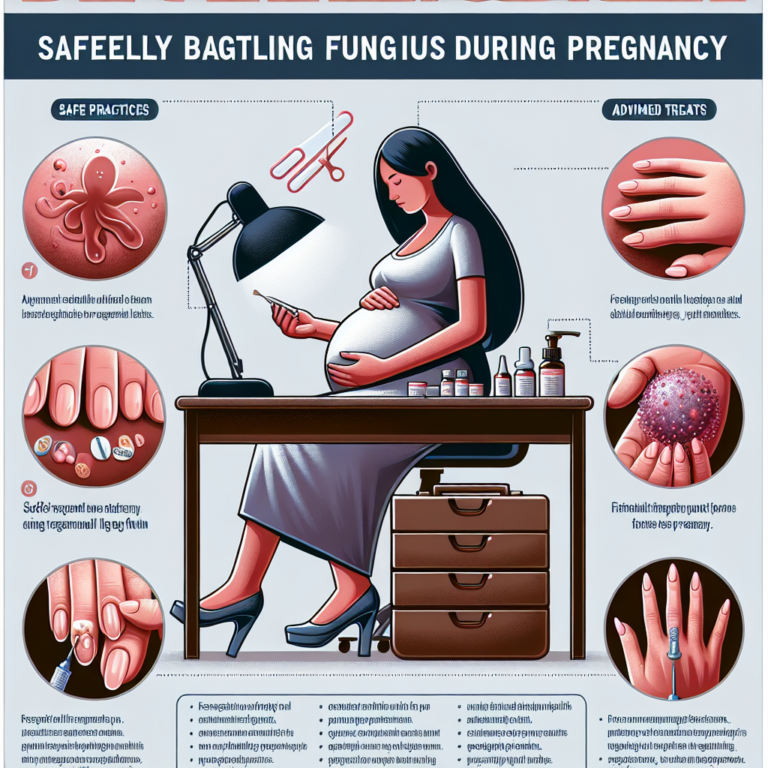Nail fungus, also known as onychomycosis, is a common condition that affects millions of people worldwide. It can be both embarrassing and painful, causing nails to become discolored, thickened, and brittle. However, the good news is that there are effective treatments available to help you combat nail fungus and achieve clear and healthy nails once again. In this comprehensive guide, we will discuss the causes of nail fungus, how to prevent it, and the best ways to treat it. By following these tips and recommendations, you can say goodbye to the nail fungus nightmare and hello to beautiful, healthy nails.
Causes of Nail Fungus:
Nail fungus is typically caused by fungi called dermatophytes, but can also be caused by yeast or molds. These fungi thrive in warm, moist environments, making nails a prime target for infection. Some common causes of nail fungus include:
– Poor nail hygiene
– Trauma to the nail
– Wearing tight-fitting shoes
– Walking barefoot in public places, such as pools or gyms
– Having a weakened immune system
– Aging
– Diabetes
– Poor circulation
Tips for Fighting Nail Fungus:
1. Keep your nails clean and dry: Fungi thrive in warm, moist environments, so it is important to keep your nails clean and dry to prevent infection. Be sure to wash your feet regularly and dry them thoroughly, especially between the toes.
2. Wear moisture-wicking socks: Moisture-wicking socks can help keep your feet dry by absorbing sweat and moisture. Avoid wearing tight-fitting shoes or socks that trap moisture, as this can create the perfect environment for nail fungus to thrive.
3. Use antifungal products: There are several over-the-counter antifungal products available, such as creams, powders, and sprays, that can help combat nail fungus. Look for products that contain ingredients like terbinafine or clotrimazole, which are known to be effective against fungi.
4. Practice good nail hygiene: Trim your nails regularly and keep them short to prevent fungal infections from taking hold. Avoid using the same nail clippers or files on infected nails and healthy nails, as this can spread the infection. Be sure to disinfect your tools after each use.
5. Seek professional treatment: If home remedies and over-the-counter treatments are not effective in treating your nail fungus, it may be time to seek professional help. A dermatologist can prescribe oral antifungal medications or recommend other treatment options, such as laser therapy or nail removal, to help you get rid of the infection.
Prevention of Nail Fungus:
Preventing nail fungus is key to maintaining clear and healthy nails. By following these tips, you can reduce your risk of infection and keep your nails looking their best:
– Keep your feet clean and dry
– Wear breathable shoes and moisture-wicking socks
– Avoid walking barefoot in public places
– Do not share nail clippers or files with others
– Disinfect your tools regularly
– Avoid wearing nail polish for extended periods, as it can trap moisture and lead to fungal growth
– Choose breathable nail polish brands
– Maintain a healthy diet and lifestyle to support overall nail health
– Keep your immune system strong by staying active and getting enough sleep
Treatment Options for Nail Fungus:
There are several treatment options available to help you combat nail fungus and restore your nails to their healthy state. Some common treatments include:
– Over-the-counter antifungal products: Creams, powders, and sprays that contain antifungal ingredients can help treat mild cases of nail fungus. These products are easy to use and can be applied directly to the affected nail.
– Prescription oral medications: If over-the-counter treatments are not effective, your dermatologist may prescribe oral antifungal medications to help clear up the infection. These medications are typically taken for several months and may have side effects, so it is important to follow your doctor’s instructions.
– Topical antifungal solutions: Prescription-strength antifungal solutions can be applied directly to the affected nail to help fight off the infection. These solutions are more potent than over-the-counter products and may be recommended for severe cases of nail fungus.
– Laser therapy: Laser therapy is a non-invasive treatment option that uses focused light beams to kill the fungus that causes nail infections. This treatment is painless and usually requires multiple sessions to see results.
– Nail removal: In severe cases of nail fungus that do not respond to other treatments, your doctor may recommend removing the infected nail to allow a new, healthy nail to grow in its place. This procedure is typically done under local anesthesia and can be effective in treating stubborn infections.
Conclusion:
Nail fungus can be a frustrating and persistent condition, but with the right treatment and prevention strategies, you can overcome the nightmare of fungal nails and achieve clear and healthy nails once again. By following the tips outlined in this comprehensive guide, you can take control of your nail health and say goodbye to unsightly and painful infections. Remember to practice good nail hygiene, seek professional treatment if needed, and take steps to prevent future infections. With patience and persistence, you can finally put an end to the nail fungus nightmare and enjoy beautiful, healthy nails for years to come.





